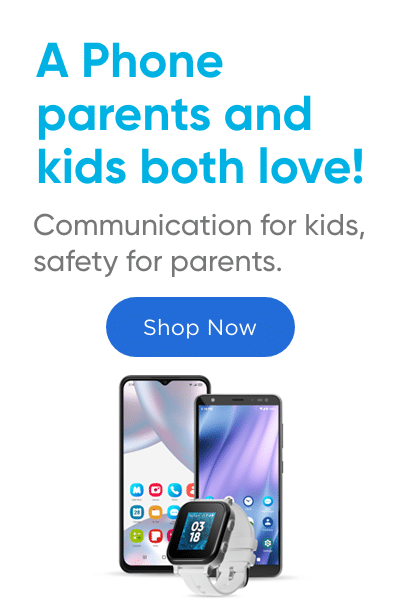FOMO and Social Media — What the Fear of Missing Out is Doing to Your Family
OCT 14, 2019
FOMO and Social Media — What the Fear of Missing Out is Doing to Your Family
Happy pictures capture happy moments, right? That seems like a simple concept, but why is it that the concept of “moments” doesn’t apply when we gaze into the world of social media? “Moment” translates into “always” in the blink of a Facebook or Instagram refresh. In this article, we will discuss what FOMO and social media is doing to your family, and what you can do to fight back.
Does social media influence your mood?
When I think of why I originally signed up for Facebook over a decade ago, I can honestly say it was to reconnect with people I thought were lost to me. It was fun to catch up, to see what people were doing, to watch families be created, and witness adventures unfolding, but somewhere along the way, this ceased to be the full extent of my motivation.
A darker side emerged as I realized how my emotional state could easily pull my feelings in one direction or another. I could get on Facebook perfectly happy and close the tab grumpy, irritated, and disgruntled.
I could also use it as a tool to improve my emotional state—that is, if my community played along with me in my game. By posting a picture, I could let the comments and likes fill up what was empty and lacking in my heart. “Look what I did! Look how happy we are! #Blessed!”
We essentially expect people to affirm what we already appear to know. But do we really know? If we did, would we need this much external affirmation?
It’s hard not to compare our pictures with those of others. We post a picture, so full, alive, and content, but our feed refreshes and we see someone so full, so alive, and so content, too, but on the beaches of Maui when we were on a lake in Kentucky.
We post a picture of ourselves at home on New Year’s Eve celebrating with those we love in pajamas and plastic champagne flutes. We are so happy to have such good friends! But our feed refreshes and there we find others celebrating with their loved ones, but all dressed up, maybe on Times Square with crystal champagne flutes. We were excited to spend a cozy night at home with hot tea and Netflix, but our feed refreshes and we realize we weren’t invited to the party down the street.
FOMO—the Fear of Missing Out
Social media can make what we were grateful for pale in comparison to what others have or experience. We are left questioning—is there something better out there for me, too? If so, we don’t want to miss it.
As a result, we spend hours perusing, continually checking, inhibiting our very ability to have a better quality of life with the very people who are truly invested in us. The name for this is “FOMO” or the “fear of missing out.”
One study defined FOMO as ‘‘the uneasy and sometimes all-consuming feeling that you’re missing out—that your peers are doing, in the know about, or in possession of more or something better than you.’’
We’re doing this as 30-year-olds—and 40-, 50-, and 60-year-olds. And our brains are completely developed! We have an entire generation under us that don’t have that luxury yet. We should be able to see there is an unending cycle at work here. That, if left unchecked, will leave us hungry, fearful, and discontent with the things we do have and do experience.
As parents, we need to make sure we disengage from this cycle so we can teach our kids how to disengage, too.
FOMO and Social Media
Let’s pause and think about our social media habits. We can probably remember feeling FOMO at some point. Maybe often.
Did you know there is actual research on the phenomenon of FOMO? We now know that if it goes unchecked, it can lead to a variety of issues in ourselves and our children: depression, anxiety, and sleep deprivation.
Check out these other interesting facts about FOMO and social media:
• FOMO causes lower satisfaction, mood, and life satisfaction.
• FOMO results in higher levels of social media engagement.
• FOMO originates from unhappiness.
• Curtailing social media usage lowers levels of loneliness and depression.
• Self-monitoring time on social media results in less anxiety and FOMO.
FOMO and Pornography
Another danger of FOMO is that it shares the common trait of unhappiness with one of the most addictive behaviors today: pornography. Children are subliminally being taught through social media that their unhappiness can be cured by entering a world of fantasy where they can pretend to be or do most anything.
Instagram, YouTube, and Snapchat are the top three social media platforms used by tweens and teens and all of them are platforms that give children unlimited access to pornography. In 2018, Protect Young Eyes filed 50 reports in 5 days on hashtags on Instagram that featured pornographic content, yet the company considers itself family-friendly. YouTube has also been called out for rampant child exploitation on its platform. When recently viewing my Snapchat account, the recommended story in my “For You” section was entitled, “Kim and Kanye’s $14 Million Butt Grab.” There is a very good chance this is also a young child’s recommended story and by clicking on it, they will be lead to pornographic images.
If parents want to protect their children, it’s important to discuss the dangers and accessibility of pornography, and avoid apps and sites that do not filter this type of activity.
How to Curb FOMO in Your Family
While FOMO is a problem, it’s not unsolvable! Choosing to tackle this personally and as a family will bring more peace, contentment, and gratitude in our lives.
Here are some tips and talking points to minimize FOMO:
• Be aware. Start by recognizing how much time you spend on social media and what your motivations are for using it.
• Be conscientious of how your posts will make others feel. When we host birthday parties, our rule for our kids and their guests is no posting pictures of the party on social media. Being left out is one of the worst feelings for kids (and adults, too) and we don’t want anyone to feel hurt because they weren’t included. Also, teach kids to be aware of posting things that can come across as bragging or prideful. It’s okay to celebrate, but it’s important to listen to that inner conscience that tells you when it’s not appropriate.
• Notice attitudes and behaviors that come along with using social media. Do you find that your kids self-medicate with social media when they are struggling at school or with relationships? Do they turn to it when they are feeling anxious or sad? It can be hard to draw our tweens and teens away from their devices, but real relationships and connections are such an important part of mental and emotional health. Plan some fun outings. Even if they roll their eyes at some forced family fun, know you’re making a positive impact on them.
• Create alternatives. Have everyone brainstorm a list of healthy alternatives so it’s easier to stay off of social media when feeling down. Doing this can help your family turn away from the quick fix many of us get from social media. If you’re feeling less-than, depressed, or in need of a pick-me-up, having a list of alternatives makes turning down social media a tad easier. What goes on the list? Things like taking a walk, reading a book, calling a friend, writing a handwritten note, and creating something with your hands. These are all feel-good activities.
• Find gratitude. Gratitude is the king of happiness. If FOMO is due to unhappiness, gratitude is the antidote. Simply teaching yourself and your kids to pay attention to what they have helps them find contentment and appreciation. This reduces comparison with others, which is what social media highlights. Each of us has so much we can find to be thankful for. What better way to keep our attention than to make a family gratitude chart or jar? At your next family dinner, grab a chalkboard and take turns writing down things you’re grateful for. Or put a jar in the living room with some scraps of paper next to it and ask your family members to contribute three things to the jar each week. At the end of the week, read them aloud. Keeping a gratitude journal is another great option and you can download a free 21-Day Gratitude Journal on our website Protect Young Minds.
FOMO is prevalent and social media isn’t going anywhere anytime soon, so what can we do? The best way to help ourselves and our kids is to recognize the problem and remember that moderation and balance are key to helping us keep things in the right perspective.
For more information protecting your children, please check out Protect Young Mind’s free guide on “Is My Child Ready for a Smartphone? 10 Questions to Guide Parents.”
This week’s guest contributor, Jen Ferguson, is from Protect Young Minds, a national organization whose mission is to empower parents, professionals, and community leaders to protect kids from pornography and harmful content.












Success!
Your comment has been submitted for review! We will notify you when it has been approved and posted!
Thank you!